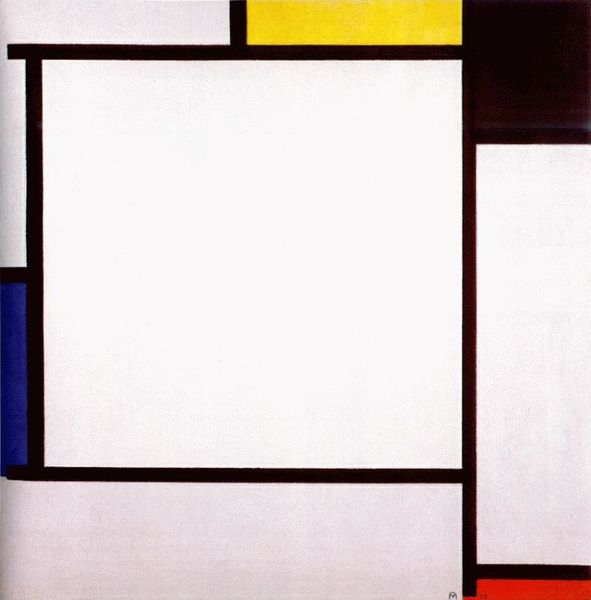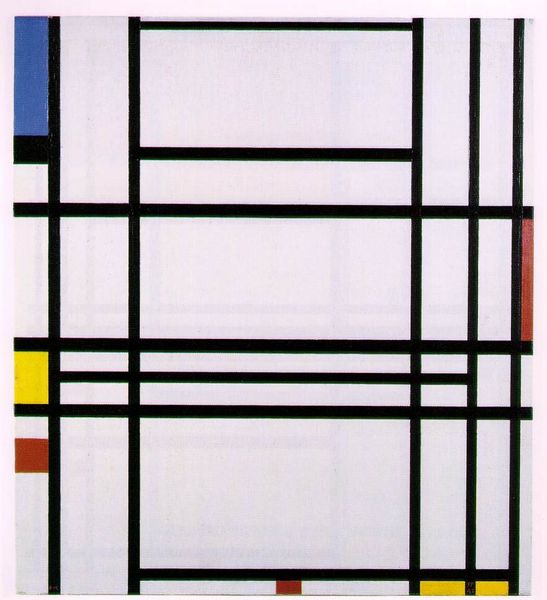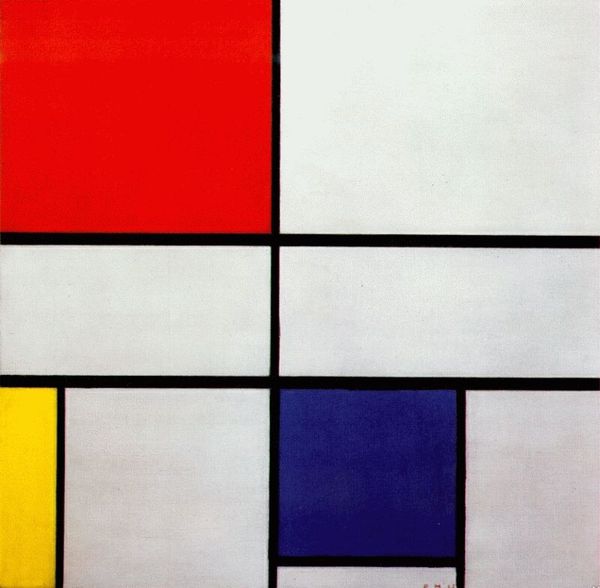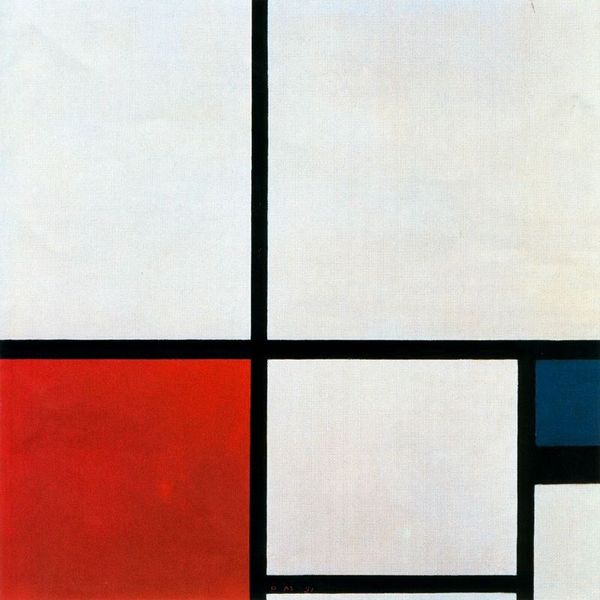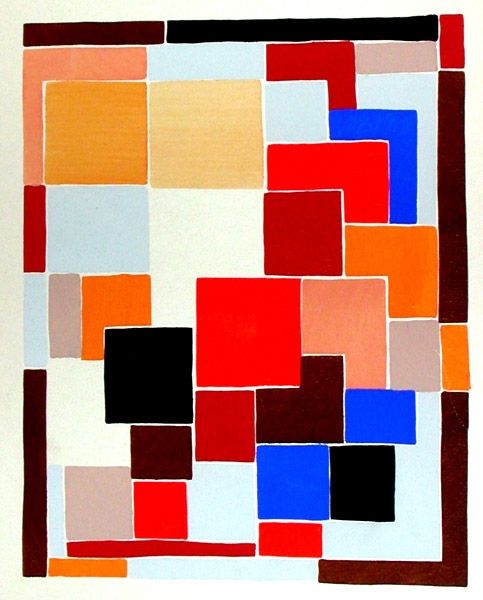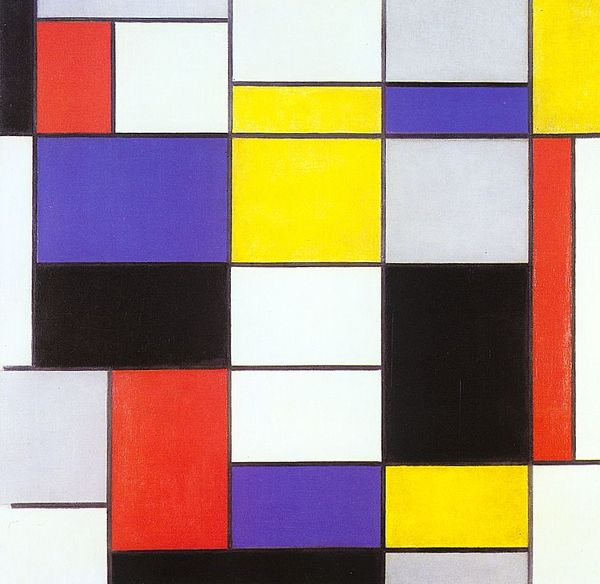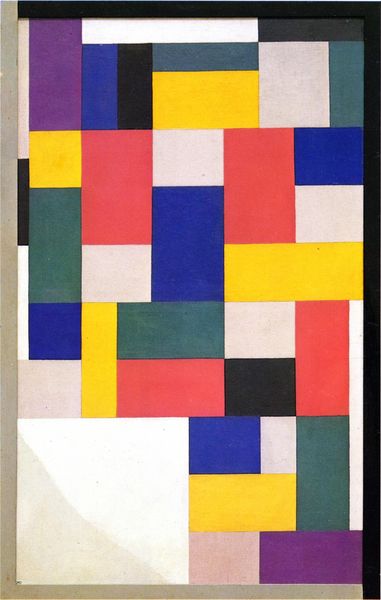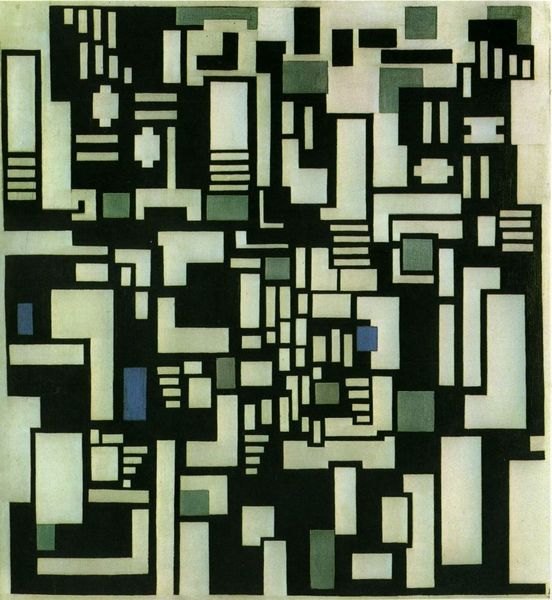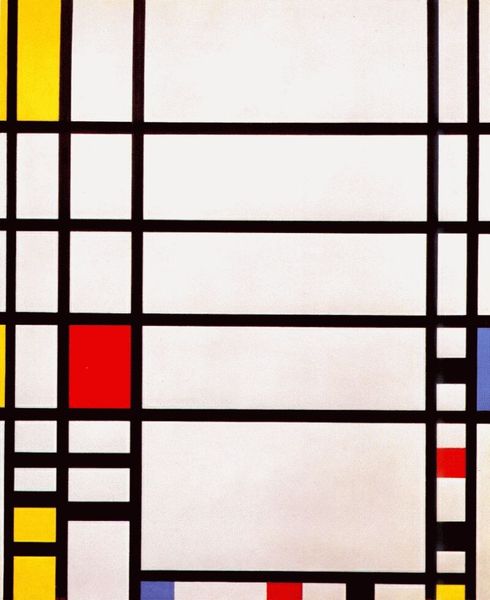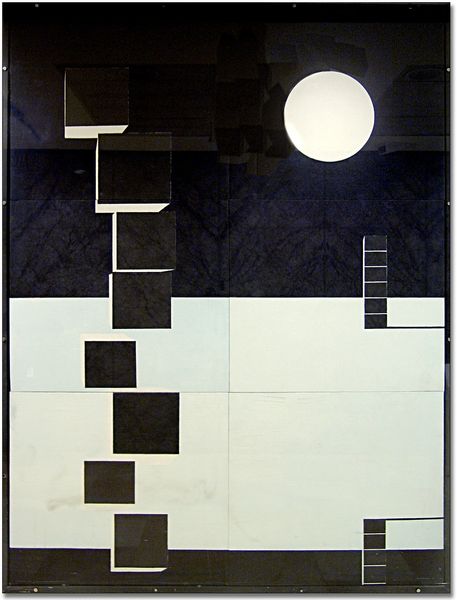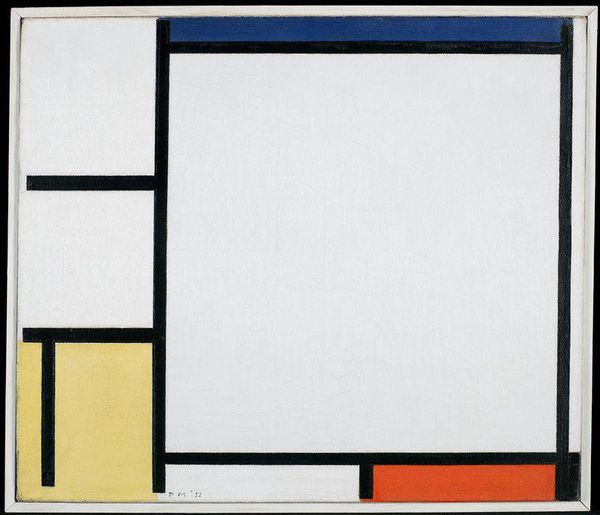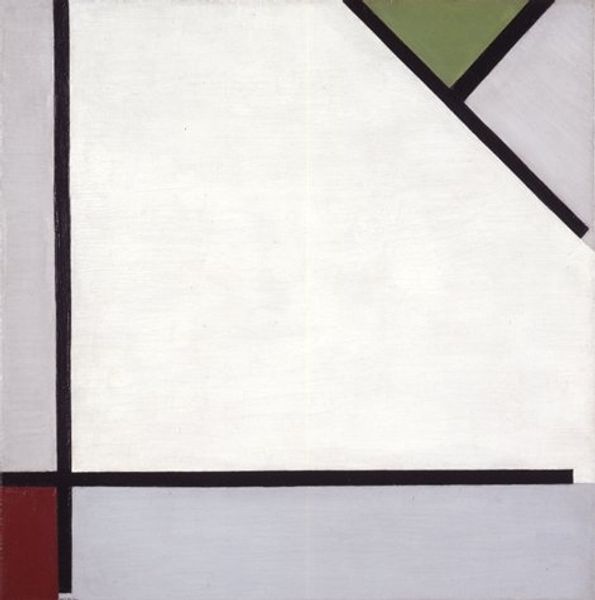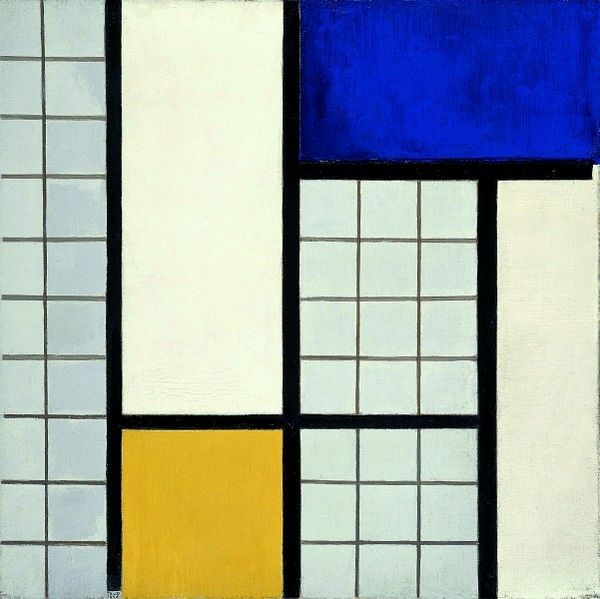
stain, glass
#
de-stijl
#
neo-plasticism
#
abstract painting
#
stain
#
geometric composition
#
geometric pattern
#
glass
#
abstract pattern
#
rectangle
#
geometric
#
geometric-abstraction
#
abstraction
#
modernism
Copyright: Public domain
Editor: Here we have Theo van Doesburg’s "Stained Glass Composition: Woman," created in 1917. It’s a fascinating use of stained glass, especially since it looks almost like a painting. What’s so compelling is how abstract it is while supposedly being about a “woman.” What do you see in this piece from a historical point of view? Curator: Well, what immediately strikes me is the social context. In 1917, you’re in the midst of the First World War, a period of immense social upheaval. Artists like van Doesburg were seeking a universal visual language, something beyond the specificities of national identity and the chaos of war. The stark geometry and limited palette reflect a desire for order and clarity amidst chaos. Does this push toward abstraction signal anything to you in terms of societal change? Editor: I see your point! Maybe this radical simplification—these blocks of color and hard lines—was a way to wipe the slate clean. Did the medium—stained glass—have significance, or was it just a vehicle for his artistic goals? Curator: The choice of stained glass is particularly interesting. Traditionally, it's a medium associated with religious institutions and the transmission of specific narratives. Van Doesburg takes this traditionally decorative, narrative-driven medium and transforms it into a vehicle for abstract expression. Consider the social and institutional implications of that subversion. Is he trying to suggest a new kind of spirituality, one based on pure form and color? Editor: That’s a thought-provoking idea! It’s almost like he’s reclaiming a public art form for personal, non-representational expression. He is taking religious connotation to a different realm, not necessarily to refute but to explore what else it can signify. I definitely see this work differently now, considering how it interacts with established institutions. Curator: Exactly. It’s this tension between the medium’s history and its radical reinterpretation that makes it so compelling. Editor: Definitely, now I better understand this intersection between aesthetics, media, and the desire to rebuild a fractured world!
Comments
No comments
Be the first to comment and join the conversation on the ultimate creative platform.
